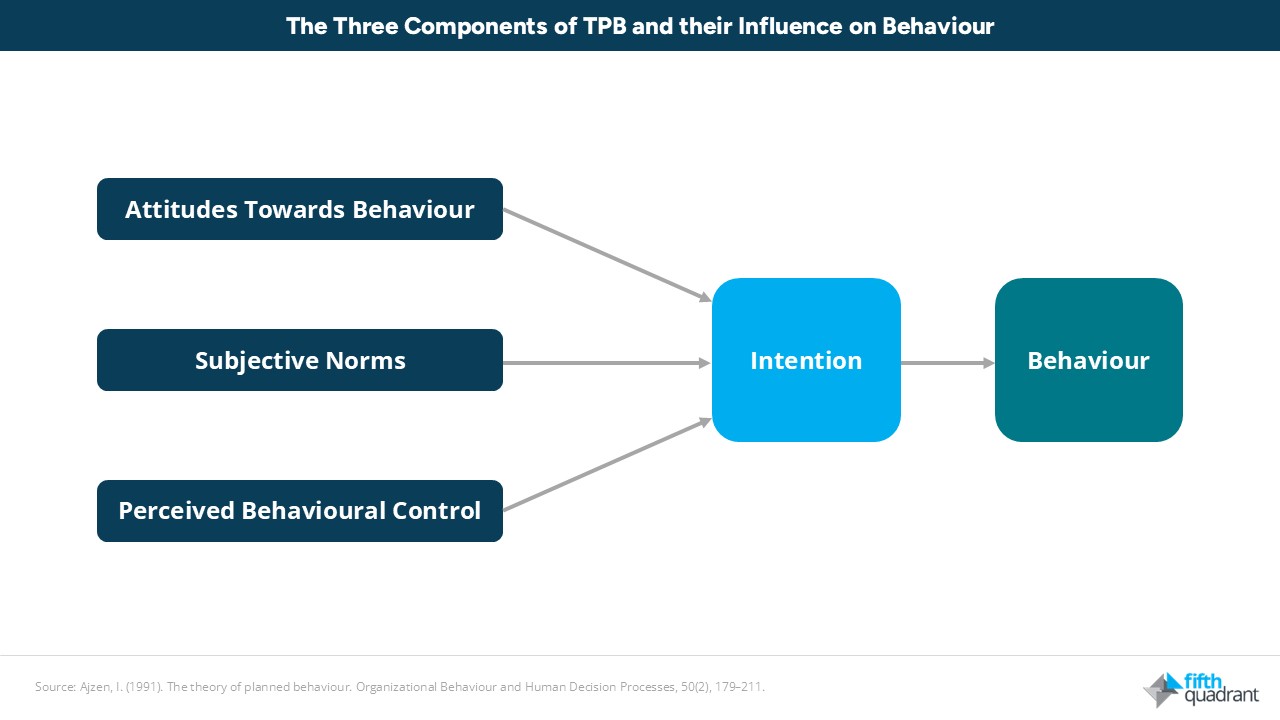Author: Nick Rassool | Posted On: 22 Sep 2025
Many campaigns and rollouts lose people at the jump from intention to behaviour. The Theory of Planned Behaviour (TPB), developed by Icek Ajzen, stands out because it narrows the problem to three levers you can actually influence: Attitude (is it worth it?), Subjective Norms (do others expect this of me?) and Perceived Behavioural Control (can I actually do it?). Together they shape intention, the immediate precursor to behaviour.
Why this matters for research and marketing
Clients often arrive with long driver lists. TPB collapses long lists into three families of belief and provides a shared language across insight, product and marketing. It keeps us honest about causality: we’re not just reporting correlations; we’re reasoning about the beliefs that form intention, while acknowledging that practical constraints can block action even when intention is high.
The three components of TPB
- Attitude (evaluated outcomes): People act when expected benefits outweigh perceived costs.
- Subjective Norms (social pressure): Perceptions of family, peers, colleagues and the wider public shape what feels acceptable and common.
- Perceived Behavioural Control (do ability): Even with positive attitudes and supportive norms, action stalls if the path feels hard.
Put simply: Attitude + Norms + Control → Intention → Behaviour

Three key factors shape how consumers form attitudes and perceive social expectations:
- Cultural & social factors: Cultural and social norms shape what feels acceptable and worthwhile. Understanding local contexts becomes crucial when rolling out campaigns across different markets or demographics.
- Personal factors: Personal characteristics and resources (e.g., age, income, time pressure) influence how people weigh benefits/risks and determine whose opinions matter most to them.
- Marketing factors: Advertising, promotions, influencers and reviews can shift both attitudes (benefit/risk framing) and norms (signals that others approve or are already doing it). The key is understanding which levers move your specific audience.
Examples of TPB in action
An article from the Science of Marketing lays out three clear real-world scenarios and shows how attitude, subjective norms, and perceived control each contribute.
1. Public health campaign encouraging regular exercise:
- Attitude: Highlight tangible, personally relevant benefits of fitness rather than generic health messaging
- Subjective Norms: Feature credible champions like community leaders endorsing the behaviour, not just celebrity athletes
- Perceived Behavioural Control: Provide free programs or simple, followable guides so starting feels genuinely achievable
2. Fashion brand promoting sustainability:
- Attitude: Demonstrate reduced environmental impact from eco-friendly materials with specific credible claims
- Subjective Norms: Use influencer endorsements and social proof to showcase broader community support
- Perceived Behavioural Control: Remove barriers through competitive pricing, convenient store locations and clear product information
3. A technology company launching a new smartphone feature:
- Attitude: Demonstrate clear, specific usefulness that addresses real pain points .
- Subjective Norms: Show that that peers and early adopters are upgrading, creating social momentum
- Perceived Behavioural Control: Offer comprehensive, easy to follow tutorials and responsive support to ensure ease of adoption
From Explanation to Direction
TPB legitimises why certain directions make sense. In practice:
- If Attitude is the bottleneck: Clarify the net benefit with specific, quantified outcomes (time saved, risk reduced, money earned). Address perceived barriers by acknowledging hassle, complexity, or uncertainty rather than dismissing these concerns.
- If Subjective Norms are weak: Use referents that feel authentic to your audience – peers, local communities, trusted experts, rather than distant authorities. Present social proof with context that resonates with your target group’s values and identity.
- If Perceived Behavioural Control is low: Systematically reduce friction by cutting steps, simplifying language and providing guidance (tutorials, live chat, trials). Remove early costs or penalties, and engineer an easy first success to build confidence.
Where TPB helps most, and its limits
TPB shines when the target behaviour is clear and the bottleneck is cognitive or social. It’s particularly effective for adoption decisions, switching behaviours, starting or stopping habits, compliance programs and and repeat use scenarios.
However, it is less helpful for highly complex decision making processes, spontaneous actions, or situations where external forces (price changes, availability, policy shifts) can overwhelm even strong intentions.
Use reliable questions to track attitudes, norms and perceived control, then link improvements in these scores to concrete outcome metrics like trial starts, booking completions, or repeat usage rates. This allows teams to see whether belief change translates into actual behaviour change.

The payoff
The Theory of Planned Behaviour offers marketing and research teams a practical lens for understanding, and influencing, what people actually do. Rather than guessing at drivers or relying on generic best practices, TPB provides a clear line of sight from belief to intention to action.
Whether you’re launching a new product, driving a sustainability initiative, or running a public health campaign, TPB helps bridge the gap between psychology and marketing. It enables teams to design interventions that resonate with audiences and convert agreement into measurable action.
For research teams, TPB transforms broad “why don’t people do X?” questions into specific, testable hypotheses about which beliefs need to shift. For marketing teams, it provides clear guidance on messaging strategies and channel selection based on whether you need to change attitudes, strengthen norms, or reduce barriers.
Want fewer hunches and more movement in the numbers that matter? Fifth Quadrant’s TPB-informed research aligns insight, product and marketing strategies to shift real behaviour. Contact us today to discover how we can help you move from intention to action.
Posted in Uncategorized

